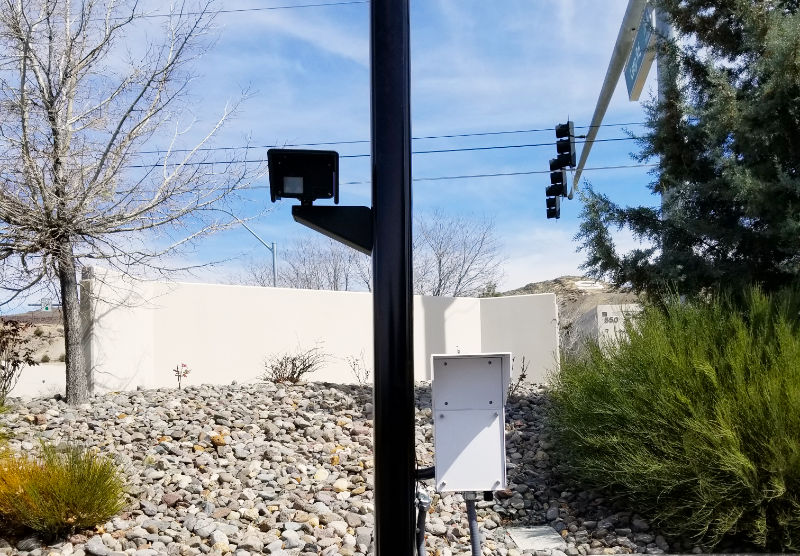Triple technology barrier
RELIABILITY : 3 technologies working in combination with a single operating interface to create a highly reliable detection solution – Active infrared, microwave and stereo doppler motion sensor
INTEGRATION : Zoning function; Anti-climbing cap; Beams come pre-wired; Integrates with leading VMS providers such as Milestone and Genetec
IP TECHNOLOGY : Allows for remote set-up, configuration and maintenance
Overview
The triple-technology barrier APIRIS 3100 is the only system on the security market today that combines a multiplexed infrared beam barrier, a high-frequency microwave barrier and a high-frequency sensor with Doppler effect working in unison.
Upon an intrusion, alarm activation is based on simultaneous intrusion detection alerts by at least two of the three technologies, one of which is always infrared. This system makes detection verification highly reliable and reduces unwanted alarms.
APIRIS 3100 features a zoning function which optimizes the use of PTZ cameras. Up to three virtual intrusion zones can be defined and configured per system/barrier.
The APIRIS 3100 is designed to protect highly sensitive sites that require multiple levels of security.
The triple technology APIRIS system offers a high probability of detection in perimeter intrusion detection and verification.
Current applications of the APIRIS system include the corrections market and other critical infrastructure sites that need a layered approach to protection and where one technology alone will not suffice.
| Maximum interior range | 2000 feet (500 m) |
| Maximum exterior range at all times | 328 feet (100 m) |
| Column height | 8 feet (2.5 m) - 10 feet (3 m) |
| Alarm outputs | RS 485 son each Maxibus 3000 compatible column Ethernet (RJ45 on each column) compatible with ModBus TCP Server/Client Dry contact output: 8 to 136 relays maximum (MAXIBUS 3000) + 2 relays on each column |
| Power supply | 24VDC to 48VDC - 60Hz |
| Alignment aid | Audible and visual signals on all the columns |
| Operating Temperature | -40°F to+158°F (-40°C to+70°C) - thermostat-controlled heater on each column |
| Electromagnetic compatibility | Compliant with European standards (CE label) |
| Configuration tool | HTML server integrated into each column (local access) |
| HTML server functions | • Password protected • Read/writing of parameters • Log and real-time infrared-beam status display |
Ensure barrier is installed on a stable support (e.g. tight mesh, well-sealed pole, etc.).
Ensure ground is level to ensure stability of columns over time.
A maximum of 10° elevation may be tolerated between the columns. In case of elevation above 10°, contact PROTECH’s sales department.
Site should be maintained for vegetation so that it does not cover beams, regardless of season.
Covers should be checked for cleanliness regularly and cleaned annually with a soft, damp cloth.
Infrared technology operates at a wavelength above that of visible light (950nm), which makes the IR beam invisible to the naked eye.
IR beams are transmitted and received by infrared cells – transmitter cells generate and send a pulsed beam to the receiver cells which capture infrared pulses and turn them into electrical signals. When an absence, loss or change in the signal occurs (loss of 95% of the transmitted signal), an intrusion alarm is triggered. To prevent interference of receiver cells by the infrared beams being transmitted, cells are multiplexed.
Multiplexing is a principal whereby infrared pulses are transmitted in a synchronized manner by an optical or wired link between transmitter and receiver columns. This feature optimizes cell alignment (“alignment feedback”). All the PROTECH IR barriers are multiplexed (except BIRIS II).
IP TECHNOLOGY
Ethernet connectivity of the MAXIBUS 3000 hub means the APIRIS 3100 can be configured remotely or locally via the integrated web server. A secure Linux operating system makes the interface user-friendly and fast.




